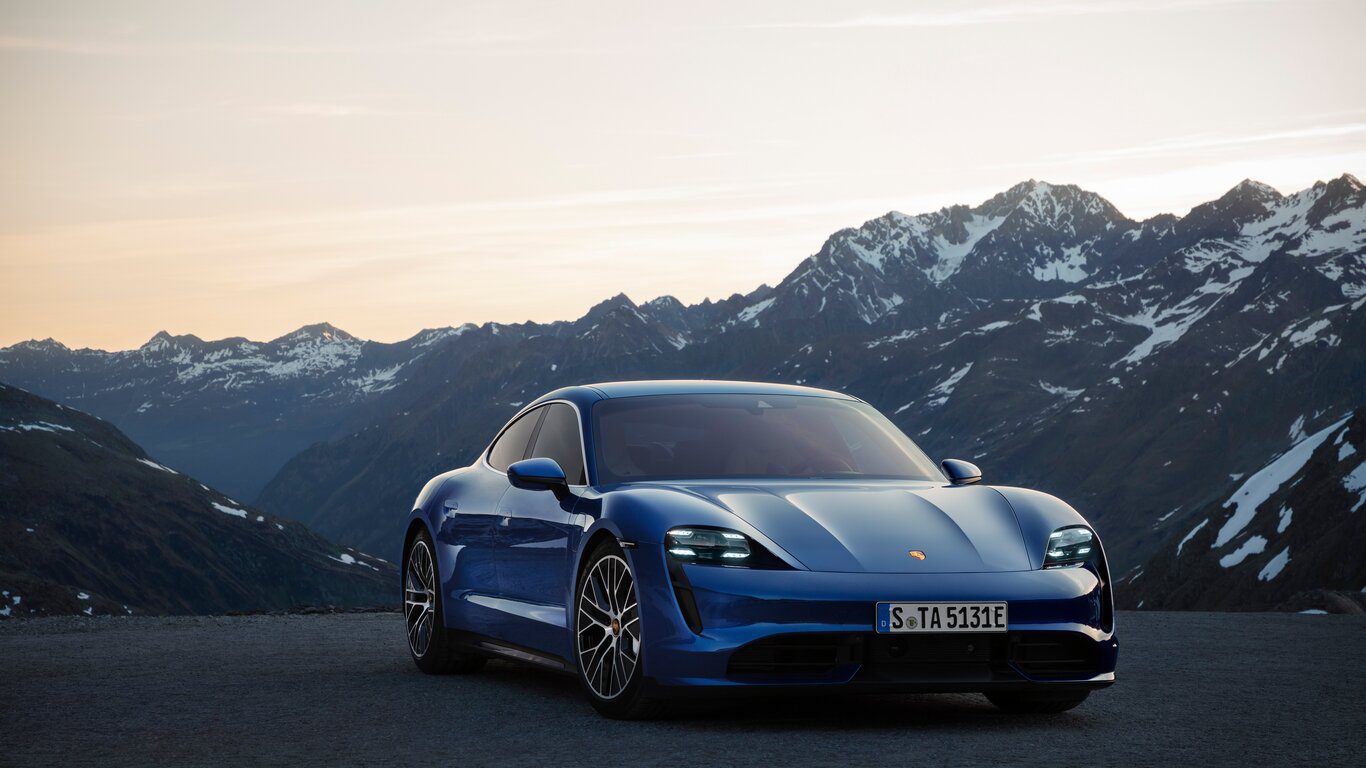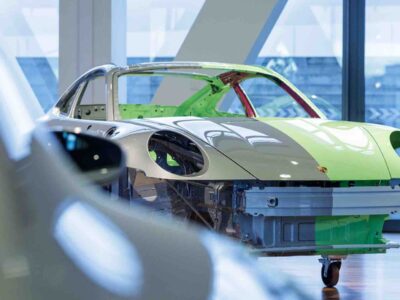Electric vehicles aren’t internal combustion cars. It’s an obvious statement, but perhaps one that highlights why some high-performance automakers are slow to pick up on the trend towards electrification. While automakers like BMW dipped their toe in the water with the release of their now-iconic i8 back in 2017, we haven’t really seen many performance automotive giants jump headfirst into the electric market. However, the masterminds at Porsche took it upon themselves to lead the pack with their all-electric Porsche Taycan, an enthralling piece of engineering that rubs shoulders with Tesla and Lucid, but in a way that’s just so…Porsche.
From a brand so steeped in petrol-powered performance automotive, the development of this car was a bit of a risk. It required the engineers at Porsche to ask themselves the important questions about what really makes a Porsche a Porsche, and as it turns out, an internal combustion engine isn’t a requirement.
At every level, the car is embedded with top-of-the-line performance tech, starting with the car’s shape. Many have likened it to Porsche’s 4-door sports sedan, the Panamera, and while there are some distinct similarities, the Porsche Taycan is its own animal. The Taycan is shorter and more streamlined than the Panamera, owing much of its more severe and aerodynamic proportions to the minimal space its electric powertrain occupies. The hood slopes gracefully down to meet the front bumper, hovering over a thin air intake opening. The poised eye-like headlights form a subtle crosshair shape, and the gill-like structures on the outside of each headlight create an almost serpentine facial structure from the front of the car. However, the two gills also double as one of the many aerodynamic flourishes the car employs, including its iconic teardrop hood shape and a smooth undercarriage. All of this builds to a slippery 0.22 coefficient of drag which rubs shoulders with the Tesla Model S and Lucid Air Dream, each just a hair over 0.2 Cd.
In addition to the car’s beautiful exterior, the Taycan has high-performance engineering in spades. The Taycan Turbo S, the line’s quickest model, zooms (quietly of course) to a 0-60mph time of 2.6 seconds, with the other four models following in the same vein. In fact, even in the base model, its 0-60 time still hovers around 5 seconds, which for any car, is no slouch. The lightning-fast acceleration is achieved through the use of a two-speed transmission, a unique innovation for the US EV market. Each of the available models’ dual-engine all-wheel-drive systems put out plenty in terms of engine power. The base model enjoys a suitable 402 horsepower and 254 torque. However, the output jumps significantly as you get into the higher performance models. The 4S’s horsepower jumps over 100, and the maximum torque almost doubles. The Turbo climbs up to over 600 horsepower and 600 ft-lbs of torque, and the top-of-the-line Taycan Turbo S maxes out at 750 horsepower and 774 ft-lbs of torque. Truly, the whole lineup was built for performance.
The only downside of the Taycan line is the range. With most models barely topping out over 200 miles and the longest range Taycan 4S eking out 227 miles, it’s admittedly not great. However, the engineers at Porsche do make up for it in two ways. The first is the fast charging time: 5 percent to 80 percent in just 23 minutes on a DC fast charger. More importantly, they also designed their batteries so that when (not if) better battery technology arrives it will be available for the older models.
On the interior, Porsche decided to ride a fine line between the electric industry trend of stark minimalism and their own brand of the richly decorated interior. The result is a heavily digitized dashboard/entertainment system that enjoys the sleek ultramodern trappings of a German engineering powerhouse. The entire dashboard/entertainment system reaches from the driver’s side to midway across the passenger side, with two central touchscreens for the central infotainment system and an optional package that adds a passenger infotainment system as well. The car enjoys ample room in terms of legroom, but storage space is perhaps slightly lacking. However, if the regular Taycan lineup doesn’t satisfy storage needs, the incredibly cool station wagon version, the Taycan Cross Turismo, will do the trick just fine.
As far as safety features are concerned, the Taycan offers a pretty standard set of driver assistance features, including lane-keeping, adaptive cruise control and parking support. The Porsche Taycan starts at just over $84,000. However, the higher-performance cars like the 4S start around $105,000 and get progressively steeper from there.
At this price point, it’s clear that this car is targeted at a select few individuals. However, the important thing about the Taycan is not its appeal to the masses. It’s a message to established performance automakers that they don’t have to forsake their automotive heritages to create a performance electric vehicle. Even without the raucous engine noise, the Porsche Taycan is still a lightning-fast, thrilling, high-performance piece of engineering, just as a Porsche should be.





